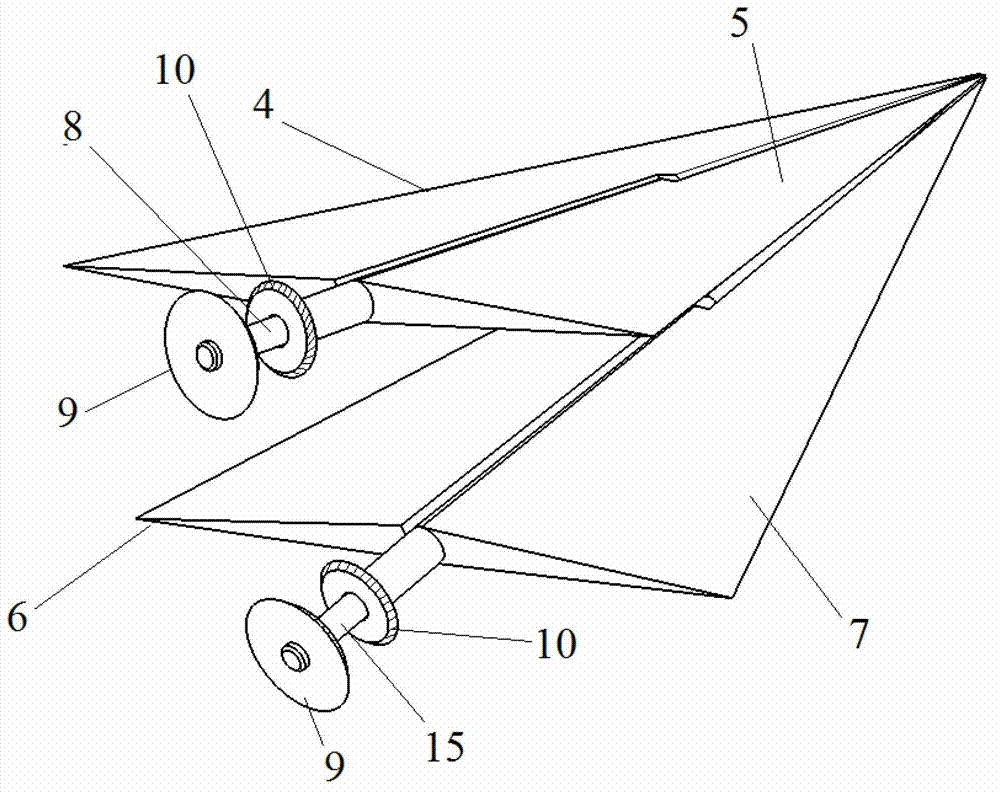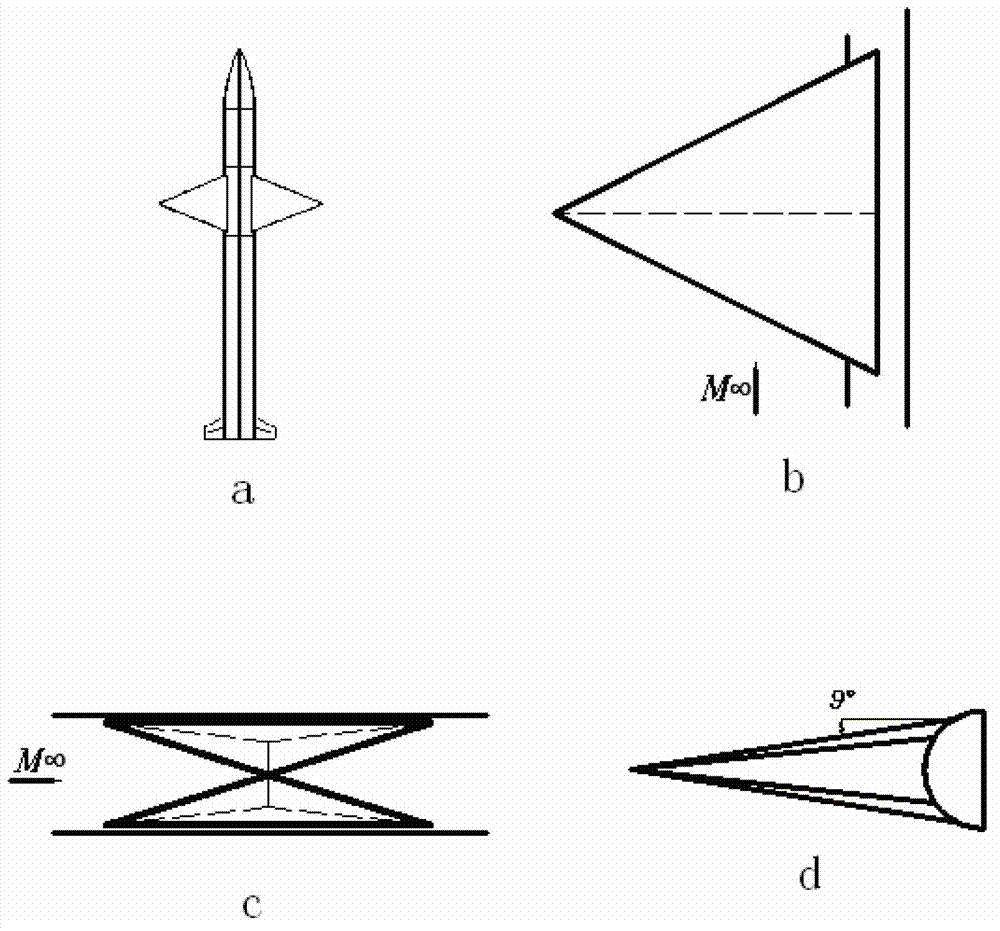Supersonic missile anti-drag wings
A supersonic and missile technology, applied in the field of modern aerospace, can solve problems such as sudden increase in resistance and congestion
- Summary
- Abstract
- Description
- Claims
- Application Information
AI Technical Summary
Problems solved by technology
Method used
Image
Examples
Embodiment Construction
[0031] This embodiment is a drag reduction wing of a supersonic missile, which includes two sets of wings and four driving mechanisms.
[0032] In this embodiment, the incoming direction of the projectile 1 is the projectile.
[0033] Two sets of projectile wings are symmetrically distributed on both sides of projectile body 1, and are located at 38% of the projectile axis length from the direction of the warhead. Each set of elastic wings includes an upper wing 2 , a lower wing 3 , a central axis 8 of the upper wing and a central axis 15 of the lower wing.
[0034] The four driving mechanisms are divided into two groups, wherein each group of driving mechanisms includes a driving mechanism for the upper blade 2 and a driving mechanism for the lower blade 3 . The two sets of driving mechanisms are located at the 0% spanwise end of the elastic wing, wherein the central axis gear 9 and the bushing gear 10 of the two sets of driving mechanisms are respectively sleeved on the cen...
PUM
 Login to View More
Login to View More Abstract
Description
Claims
Application Information
 Login to View More
Login to View More - R&D
- Intellectual Property
- Life Sciences
- Materials
- Tech Scout
- Unparalleled Data Quality
- Higher Quality Content
- 60% Fewer Hallucinations
Browse by: Latest US Patents, China's latest patents, Technical Efficacy Thesaurus, Application Domain, Technology Topic, Popular Technical Reports.
© 2025 PatSnap. All rights reserved.Legal|Privacy policy|Modern Slavery Act Transparency Statement|Sitemap|About US| Contact US: help@patsnap.com



